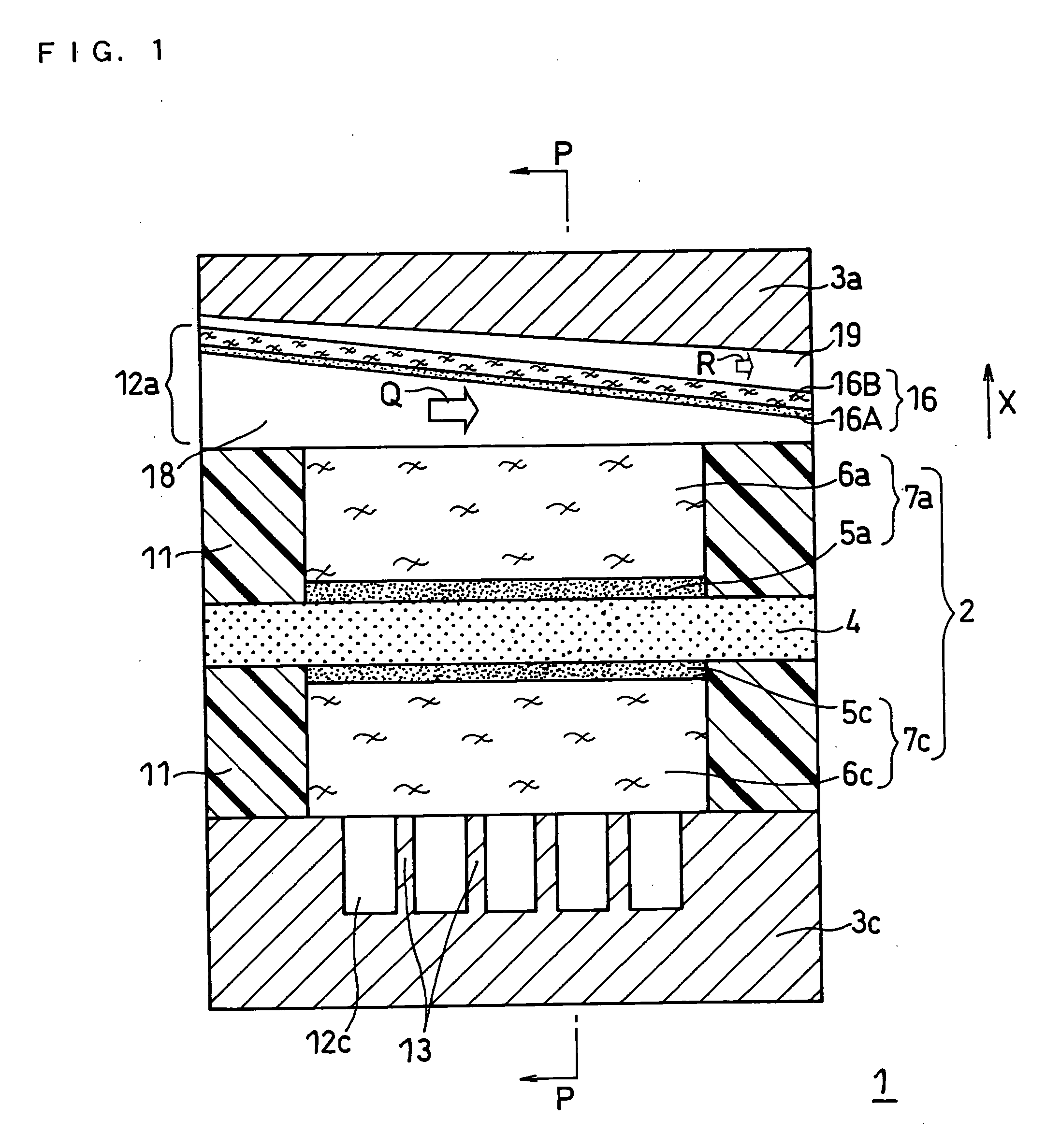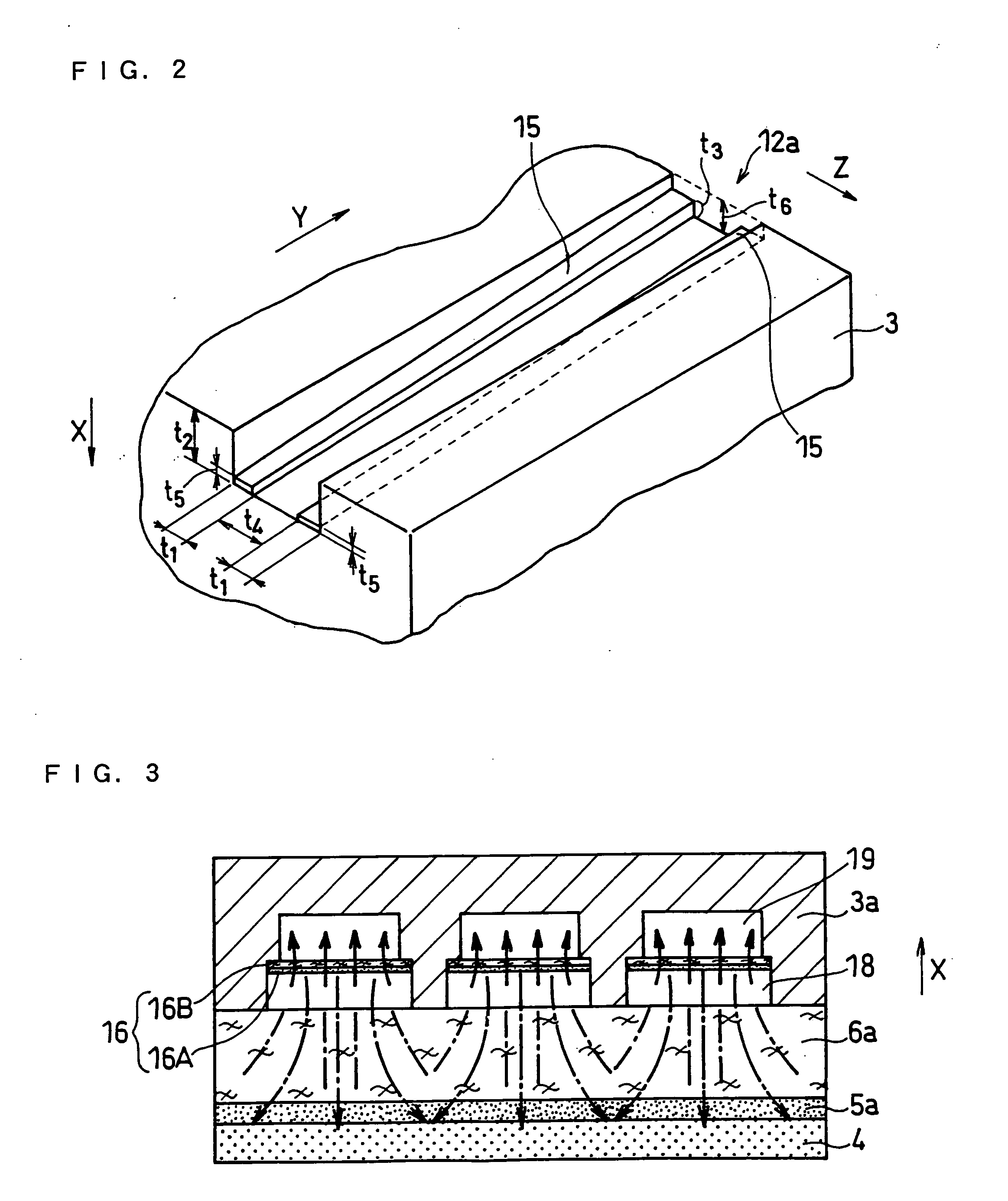Direct methanol fuel cell
a fuel cell and separator technology, applied in the direction of cell components, electrochemical generators, cell component details, etc., can solve the problems of insufficient fuel supply for the catalyst layer, increased power consumption and usage time of these devices, and insufficient practical use of dmfc, so as to reduce the effect of battery performance degradation
- Summary
- Abstract
- Description
- Claims
- Application Information
AI Technical Summary
Benefits of technology
Problems solved by technology
Method used
Image
Examples
example 2
[0095] A fuel cell was made in the same manner as Example 1 (cell 5) except that in the anode side flow path 12a of the anode side separator 3a, a starting-point height t5 of the slopes 15 was set to 0.3 mm.
example 3
[0096] A fuel cell was made in the same manner as Example 1 (cell 6) except that in the anode side flow path 12a of the anode side separator 3a, grooves with a starting-point depth (t2) of 0.6 mm, and an ending-point depth (t6) of 1 mm were formed, and a starting-point height t5 of the slopes 15 was set to 0.3 mm, and an ending-point height (t3) of the slopes was set to 0.7 mm.
example 4
[0097] A fuel cell was made in the same manner as Example 1 (cell 7) except that in the anode side flow path 12a of the anode side separator 3a, grooves with a starting-point depth (t2) of 0.6 mm, and an ending-point depth (t6) of 0.6 mm were formed, and a starting-point height t5 of the slopes 15 was set to 0.3 mm, and an ending-point height (t3) of the slopes 15 was set to 0.3 mm.
PUM
 Login to View More
Login to View More Abstract
Description
Claims
Application Information
 Login to View More
Login to View More - R&D
- Intellectual Property
- Life Sciences
- Materials
- Tech Scout
- Unparalleled Data Quality
- Higher Quality Content
- 60% Fewer Hallucinations
Browse by: Latest US Patents, China's latest patents, Technical Efficacy Thesaurus, Application Domain, Technology Topic, Popular Technical Reports.
© 2025 PatSnap. All rights reserved.Legal|Privacy policy|Modern Slavery Act Transparency Statement|Sitemap|About US| Contact US: help@patsnap.com



